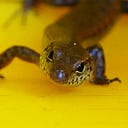Member-only story
Digging that Scene
Invertebrates make a difference in the garden

Lawn is probably too formal a term for the axe-head block of grass and pasture weeds at the back of my home. If I owned this place instead of renting it, I would grow trees and plant raised beds with nectar-producing species, and perhaps have a pond where birds could drink and bathe and the Graceful (aka Dainty Green) Tree Frogs and Northern Sedgefrogs could lay their eggs when the summer rains arrive. There would be open areas, of course, because the mosaic of habitats encourages diversity, but I would not keep a sea of grass*.
But this garden is a lawn and will probably always be so.
I don’t use herbicides or fertilisers; the grass grows just fine with rain and sun. Nor do I use insecticides to kill the moth caterpillars or the curl grubs that chew away at grass roots. It might be untidy, but it works. It finds its own balance.
A bandicoot has been digging in the lawn, leaving conical, snout-shaped pits now overgrown with grass. Along the fence line where the vegetation is less controlled, the bandicoot is living its best life. Here are patches of red dirt where the animal has been excavating those grass-chewing curl grubs and, if luck is on its side, lizard eggs too. As long as the bandicoot manages to avoid neighbourhood dogs and cats, it will work its way…
